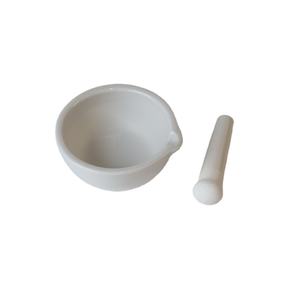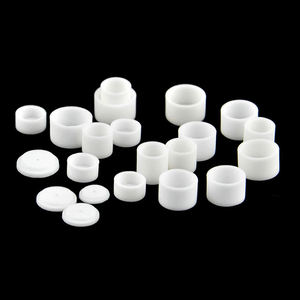1. The Product Foundation and Crystallographic Identification of Alumina Ceramics
1.1 Atomic Design and Phase Stability
(Alumina Ceramics)
Alumina ceramics, mostly composed of light weight aluminum oxide (Al two O FIVE), stand for one of the most commonly made use of classes of sophisticated porcelains because of their remarkable balance of mechanical stamina, thermal durability, and chemical inertness.
At the atomic level, the performance of alumina is rooted in its crystalline structure, with the thermodynamically steady alpha phase (α-Al ₂ O FIVE) being the leading kind used in design applications.
This stage takes on a rhombohedral crystal system within the hexagonal close-packed (HCP) latticework, where oxygen anions create a dense arrangement and light weight aluminum cations occupy two-thirds of the octahedral interstitial sites.
The resulting framework is highly stable, adding to alumina’s high melting factor of about 2072 ° C and its resistance to decomposition under extreme thermal and chemical problems.
While transitional alumina phases such as gamma (γ), delta (δ), and theta (θ) exist at reduced temperature levels and exhibit greater surface, they are metastable and irreversibly transform right into the alpha phase upon heating over 1100 ° C, making α-Al ₂ O ₃ the special phase for high-performance architectural and useful parts.
1.2 Compositional Grading and Microstructural Design
The homes of alumina porcelains are not dealt with however can be tailored via controlled variations in pureness, grain size, and the enhancement of sintering help.
High-purity alumina (≥ 99.5% Al Two O FIVE) is used in applications demanding optimum mechanical stamina, electric insulation, and resistance to ion diffusion, such as in semiconductor handling and high-voltage insulators.
Lower-purity qualities (ranging from 85% to 99% Al Two O ₃) often include second stages like mullite (3Al ₂ O SIX · 2SiO ₂) or glassy silicates, which boost sinterability and thermal shock resistance at the cost of hardness and dielectric performance.
An important consider performance optimization is grain size control; fine-grained microstructures, accomplished with the enhancement of magnesium oxide (MgO) as a grain development inhibitor, substantially improve crack sturdiness and flexural toughness by restricting split propagation.
Porosity, also at low degrees, has a damaging result on mechanical honesty, and totally thick alumina ceramics are generally produced via pressure-assisted sintering methods such as warm pressing or warm isostatic pressing (HIP).
The interplay in between composition, microstructure, and processing specifies the practical envelope within which alumina porcelains operate, enabling their usage throughout a huge range of commercial and technical domains.
( Alumina Ceramics)
2. Mechanical and Thermal Performance in Demanding Environments
2.1 Strength, Solidity, and Use Resistance
Alumina ceramics exhibit an unique combination of high hardness and moderate fracture durability, making them suitable for applications involving abrasive wear, erosion, and influence.
With a Vickers solidity generally ranging from 15 to 20 GPa, alumina ranks among the hardest engineering products, gone beyond just by ruby, cubic boron nitride, and particular carbides.
This severe solidity converts right into remarkable resistance to scraping, grinding, and particle impingement, which is made use of in elements such as sandblasting nozzles, reducing tools, pump seals, and wear-resistant linings.
Flexural stamina worths for thick alumina array from 300 to 500 MPa, relying on pureness and microstructure, while compressive strength can surpass 2 GPa, enabling alumina elements to endure high mechanical lots without contortion.
Despite its brittleness– an usual trait amongst porcelains– alumina’s efficiency can be maximized through geometric design, stress-relief functions, and composite reinforcement strategies, such as the incorporation of zirconia fragments to induce makeover toughening.
2.2 Thermal Actions and Dimensional Stability
The thermal homes of alumina porcelains are main to their use in high-temperature and thermally cycled settings.
With a thermal conductivity of 20– 30 W/m · K– higher than many polymers and equivalent to some metals– alumina effectively dissipates warmth, making it ideal for warmth sinks, insulating substrates, and furnace parts.
Its reduced coefficient of thermal development (~ 8 × 10 ⁻⁶/ K) ensures marginal dimensional modification during cooling and heating, lowering the risk of thermal shock breaking.
This stability is specifically valuable in applications such as thermocouple defense tubes, spark plug insulators, and semiconductor wafer dealing with systems, where accurate dimensional control is critical.
Alumina maintains its mechanical stability up to temperatures of 1600– 1700 ° C in air, beyond which creep and grain boundary sliding may launch, depending upon pureness and microstructure.
In vacuum or inert environments, its performance expands also better, making it a recommended product for space-based instrumentation and high-energy physics experiments.
3. Electrical and Dielectric Qualities for Advanced Technologies
3.1 Insulation and High-Voltage Applications
Among one of the most significant useful features of alumina porcelains is their impressive electrical insulation capability.
With a volume resistivity going beyond 10 ¹⁴ Ω · cm at space temperature and a dielectric stamina of 10– 15 kV/mm, alumina serves as a dependable insulator in high-voltage systems, consisting of power transmission devices, switchgear, and electronic packaging.
Its dielectric continuous (εᵣ ≈ 9– 10 at 1 MHz) is relatively steady across a large frequency variety, making it suitable for usage in capacitors, RF elements, and microwave substratums.
Reduced dielectric loss (tan δ < 0.0005) ensures very little energy dissipation in rotating existing (AIR CONDITIONER) applications, boosting system performance and lowering warm generation.
In printed motherboard (PCBs) and crossbreed microelectronics, alumina substratums offer mechanical support and electric seclusion for conductive traces, allowing high-density circuit combination in harsh atmospheres.
3.2 Performance in Extreme and Sensitive Settings
Alumina ceramics are uniquely suited for use in vacuum, cryogenic, and radiation-intensive environments because of their low outgassing rates and resistance to ionizing radiation.
In fragment accelerators and combination activators, alumina insulators are made use of to separate high-voltage electrodes and diagnostic sensors without introducing impurities or deteriorating under long term radiation exposure.
Their non-magnetic nature also makes them excellent for applications including strong electromagnetic fields, such as magnetic vibration imaging (MRI) systems and superconducting magnets.
Furthermore, alumina’s biocompatibility and chemical inertness have actually caused its adoption in clinical devices, including oral implants and orthopedic elements, where lasting stability and non-reactivity are critical.
4. Industrial, Technological, and Arising Applications
4.1 Duty in Industrial Equipment and Chemical Handling
Alumina porcelains are extensively made use of in commercial equipment where resistance to wear, rust, and high temperatures is crucial.
Parts such as pump seals, shutoff seats, nozzles, and grinding media are typically fabricated from alumina due to its ability to endure abrasive slurries, aggressive chemicals, and raised temperatures.
In chemical processing plants, alumina cellular linings safeguard reactors and pipelines from acid and alkali assault, expanding equipment life and lowering upkeep prices.
Its inertness also makes it suitable for usage in semiconductor manufacture, where contamination control is essential; alumina chambers and wafer watercrafts are subjected to plasma etching and high-purity gas environments without seeping pollutants.
4.2 Combination right into Advanced Production and Future Technologies
Past standard applications, alumina ceramics are playing a progressively crucial role in arising technologies.
In additive manufacturing, alumina powders are utilized in binder jetting and stereolithography (SLA) refines to make facility, high-temperature-resistant elements for aerospace and energy systems.
Nanostructured alumina movies are being explored for catalytic assistances, sensors, and anti-reflective finishes as a result of their high surface area and tunable surface chemistry.
Additionally, alumina-based compounds, such as Al ₂ O THREE-ZrO ₂ or Al ₂ O SIX-SiC, are being established to get over the intrinsic brittleness of monolithic alumina, offering boosted sturdiness and thermal shock resistance for next-generation architectural materials.
As industries remain to push the limits of efficiency and integrity, alumina porcelains continue to be at the leading edge of product innovation, connecting the gap between architectural toughness and functional versatility.
In recap, alumina porcelains are not just a course of refractory materials yet a foundation of modern engineering, enabling technological progression throughout power, electronics, healthcare, and commercial automation.
Their special mix of properties– rooted in atomic structure and improved with innovative handling– ensures their continued significance in both established and emerging applications.
As material scientific research progresses, alumina will undoubtedly continue to be a key enabler of high-performance systems operating at the edge of physical and environmental extremes.
5. Provider
Alumina Technology Co., Ltd focus on the research and development, production and sales of aluminum oxide powder, aluminum oxide products, aluminum oxide crucible, etc., serving the electronics, ceramics, chemical and other industries. Since its establishment in 2005, the company has been committed to providing customers with the best products and services. If you are looking for high quality polycrystalline alumina, please feel free to contact us. (nanotrun@yahoo.com)
Tags: Alumina Ceramics, alumina, aluminum oxide
All articles and pictures are from the Internet. If there are any copyright issues, please contact us in time to delete.
Inquiry us

